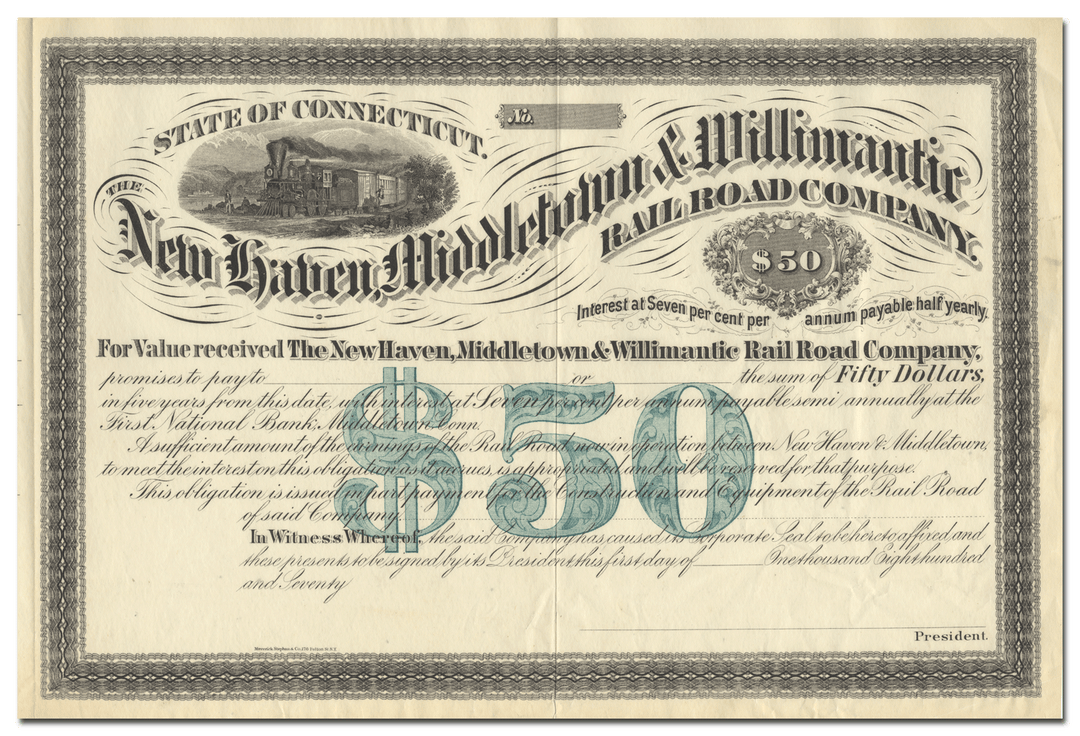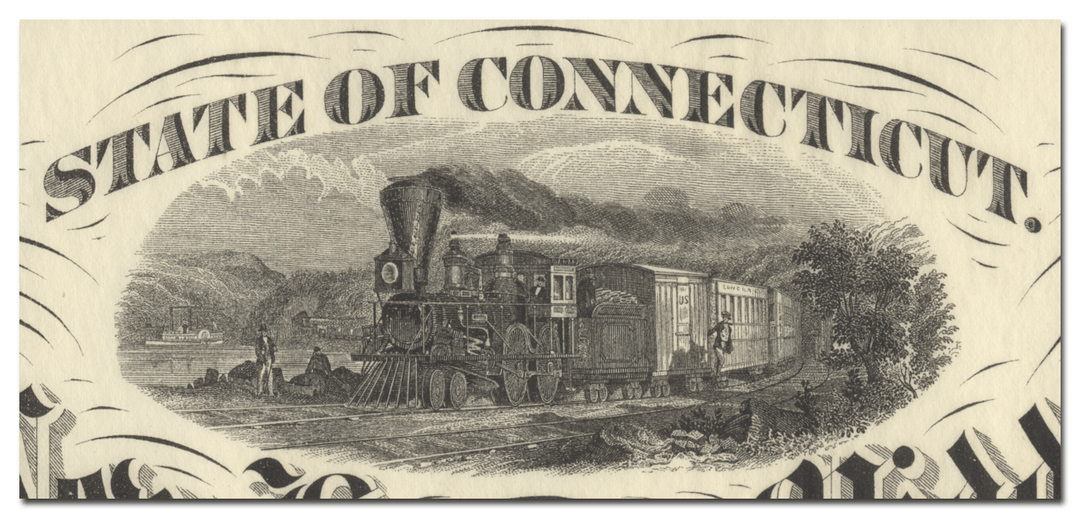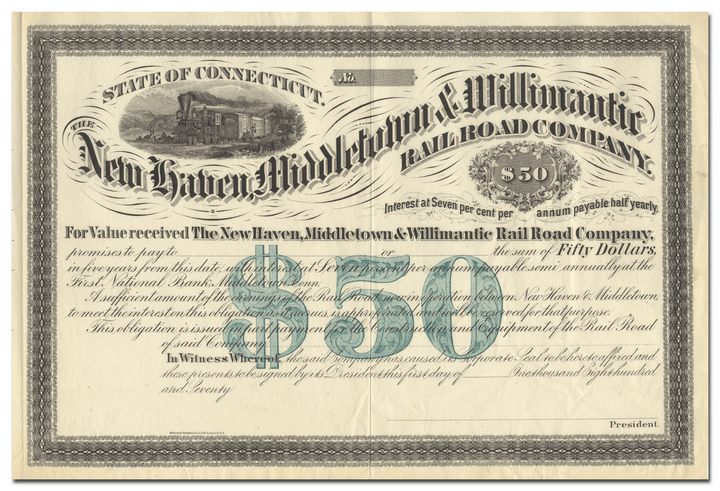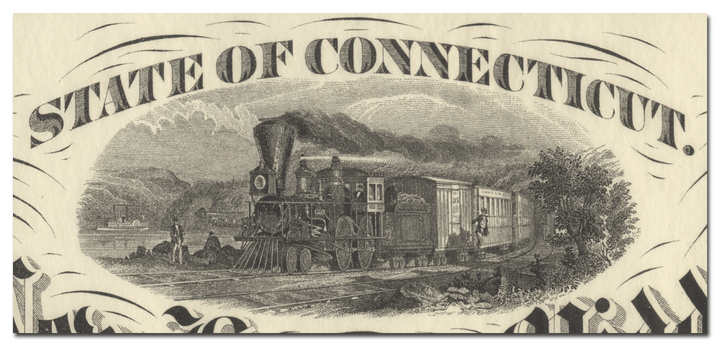New Haven, Middletown & Willimantic Rail Road Company
- Guaranteed authentic document
- Orders over $75 ship FREE to U. S. addresses
Product Details



Company
New Haven, Middletown & Willimantic Rail Road Company
(
Certificate Type
Interest Bond
Date Issued
Unissued, circa 1870's
Canceled
No
Printer
Maverick, Stephan & Co.
Signatures
NA
Approximate Size
13" (w) by 9 1/4" (h)
Additional Details
NA
Historical Context
This line, known as "The Air Line" was envisioned as a direct route between New York City and Boston. Built to bypass the still-active Shoreline Division east of New Haven (which follows the coast of New England), the Air Line at its completion connected to the New York, New Haven, and Hartford Railroad Shoreline Division at Cedar Hill Yard in New Haven, where it then continued on to Boston. The line contained many feats of engineering, thanks to mountains, valleys, and numerous rivers along the route, though its curves and steep grades both expensive and controversial to build, would later lead to its downfall and abandonment.
It opened in 1873 as the New Haven, Middletown and Willimantic Railroad. At its completion, the line was 25 miles shorter than the Shore Line. After the failure of its parent company in 1875, it was reorganized into the Boston and New York Air-Line Railroad, and later, the New York and New England Railroad.
The NY&NE was a fierce competitor to the NH, whom at the time, held a virtual near-monopoly of Connecticut rail traffic. Eventually, it would become part of the NY&NE's mainline from Poughkeepsie, New York and Boston. One of the most memorable and most famous trains of the NY&NE over The Air Line was the "Ghost Train." Created to attract wealthy travelers, the luxurious Pullman cars were painted white with gold trim, and the staff of the train wore white uniforms. The service started in 1891, but ended in 1895 due to the cost of cleaning the white cars. To make the trip shorter than the Shore Line, water pans were first used on the Air Line before any other railroad in the United States. These investments proved to be worthwhile, and shaved several hours of the trip off the Shore Line.
Success didn't last very long, and after disputes with its rival, the NH, the NY&NE could no longer get access to New Haven, which sent the railroad into bankruptcy. By 1898, the NH purchased the line, for which spelled doom.
Immediately after the NH acquired the line, most passenger traffic was rerouted to the Shore Line, thanks to the Air Line's curves and steep grades, which limited trains in size and speed. In the early 1900s, the NH upgraded the line, including the raising of bridges, and the filling in of the massive Lyman and Rapallo viaducts (named after former Air Line presidents).
While New York-Boston through trains ended in 1924, passenger service began a steep decline on the line, ending just short of the start of World War II, in 1937. By this point, most trains used the Shore Line, with the Air Line being used for mainly for a few oversized and heavy freight trains.
Related Collections
Additional Information
Certificates carry no value on any of today's financial indexes and no transfer of ownership is implied. All items offered are collectible in nature only. So, you can frame them, but you can't cash them in!
All of our pieces are original - we do not sell reproductions. If you ever find out that one of our pieces is not authentic, you may return it for a full refund of the purchase price and any associated shipping charges.








